#the last of us counts i guess
Text
THIS JUST IN... Chuuya's total dialogue/screetime ended up being roughly 40 whole seconds
#this includes anytime you can see and/or hear him#but not necessarily if he's in a scene but out of range from the camera view#the trailer literally gave us more than half of his visual appearances lol#i am struggling here HELP#chuuya nakahara#bsd spoilers#bungo stray dogs spoilers#bungo stray dogs#bungou stray dogs spoilers#bsd s4#bsd season 4#bungou stray dogs#btw i didnt duplicate any scenes so the preview in last weeks episode wasnt counted#also i used my phone stopwatch for this hence 'roughly' it might be varied by one second or two#humun error 🤷♀️ i just wanted to see a ballpark#my guess was 30 seconds anyway so i wasnt too far off lol
500 notes
·
View notes
Text
So I grew up with a pinball machine called Funhouse where you have this big head called Rudy who's taunting and yelling the entire time, and as I was listening to the audio clips of it just now I realized it's kinda giving me Emet-selch.....
#idk what to tag this#ffxiv#emet-selch#ffxiv meme#ffxiv shitpost#???????#i guess it counts#the last picture is rudy btw#actually no its rudy-selch /s#my video#did you know the voice actor for rudy apparently made mortal kombat? now you know#ive used music from funhouse before for the spinning estinien video#and afaik only ONE person recognized it as being pinball music at all#which was impressive enough#i was debating on whether or not i should post this#but then my sister said that ffxiv dan bäckman didnt stop me the other day so why now#and shes right so here we are#bonus: youre supposed to fill rudys mouth with balls#do with that as you will in regards to emet-selch
33 notes
·
View notes
Text



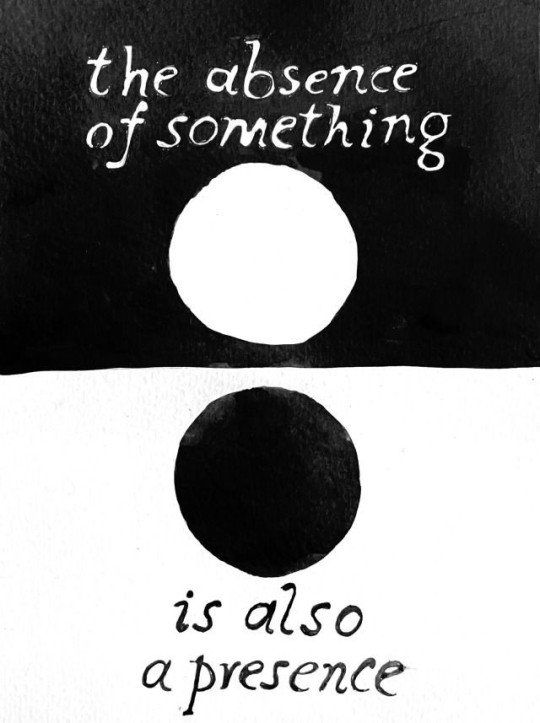









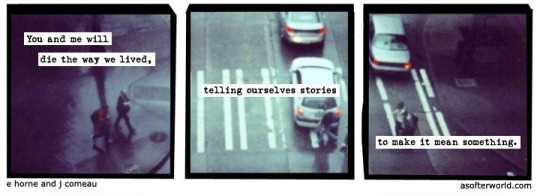
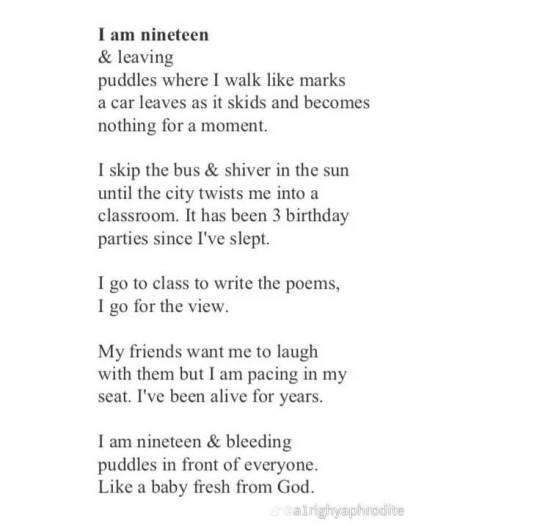




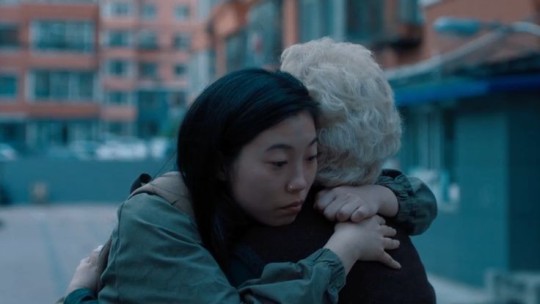






live with me forever now (just not for long, for long); October '23
Fall Out Boy, Heartbreak Feels So Good // The Farewell (2019) dir. Lulu Wang // Fall Out Boy, Hum Hallelujah // unknown // Amy Hempel // Erin Slaughter // Sally Wen Mao // Richard Siken // Laura Makabresku, The Anatomy of Melancholy // Trista Mateer // A Softer World // unknown // The Farewell // Hosho McCreesh // unknown // Fall Out Boy, Heaven, Iowa // The Farewell // Kaveh Akbar // locket engraved with words by E. E. Cummings (source unknown) // Panic! at the Disco, Trade Mistakes // Hieu Minh Nguyen
#count me awake before you sleep... I will weep ok?? I'll weep#Lu rambles#web weaving#I need to watch the farewell again I think it would be good for me at this point in my life#anyway. I'm feeling weird about my birthday. I told gurt and beebs last night that if victor hugo taught me how to use semicolons#for the best tonal effect#then pete wentz taught me the same for parentheses#idk where I'm going with this but a beloved friend put words to something about me that I hadn't pinned down before that#and I've been thinking about it all week. my birthday is coming up. idk I'm just feeling kinda weird#but not like in a bad way? just a neutral kind of weird. I can use it to wallow in angst OR I can use it for good#but the weird feelings are themselves neutral. I don't feel negative or down I just feel... strange and a bit soft and rainy I guess#idk#anyway here's this
54 notes
·
View notes
Text
artist made pop-up photo dump! :P



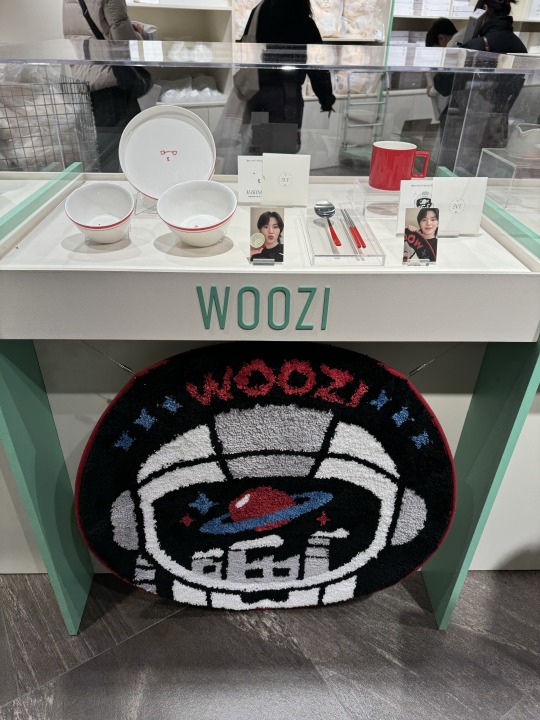




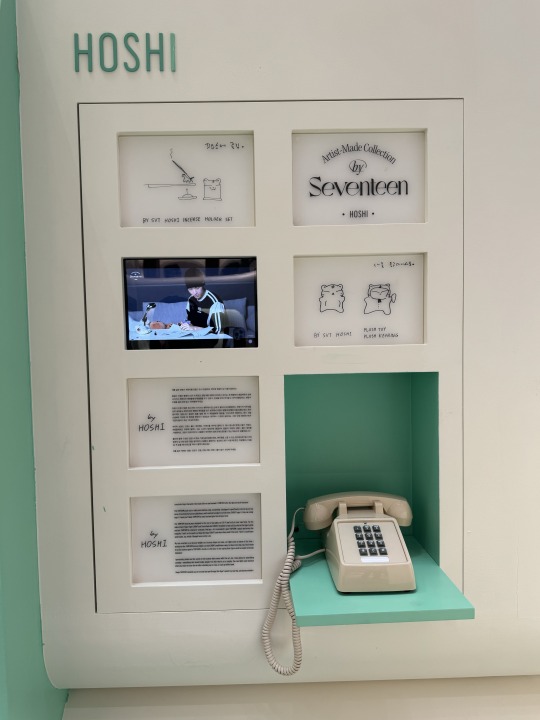

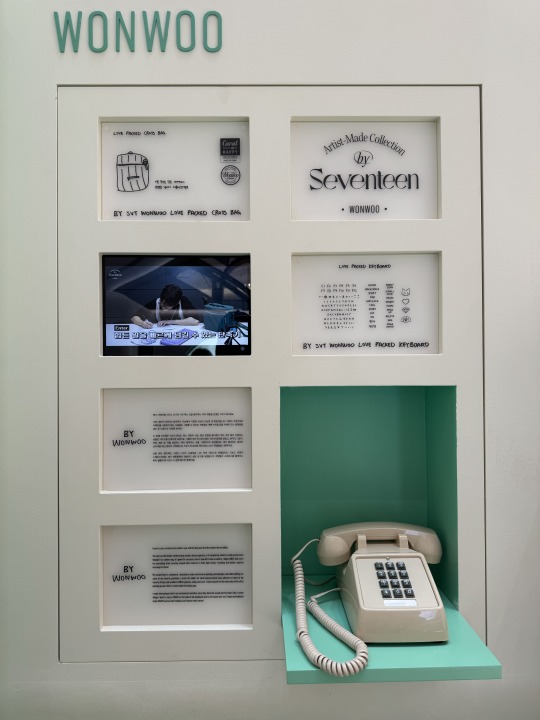









#yes hello hi i am alive btw…#did feel the need to come back and flex a bit just bc i was at this damn mall from 7am to idk like 1pm?#but i had a nice time and bought all the things i wanted to so i can’t complain too much#went in limiting myself to just hoshi’s big tiger wonu’s bag and hao’s 디팔이 set#ended up with all of that plus coups’ drinking glasses from last season bc i rlly liked how they looked in person#still counting that as a win for me bc only going one item over what i originally planned to purchase anywhere is amazing for me#i actually didnt love any of wonu’s stuff but i just got the bag to get the postcard gift thing haha#i’ll use it at the concerts i guess!#diamond life
23 notes
·
View notes
Text
Basically tlr issue #1
#cw suicide mention#I GUESS#it is tlr it do be throwing us suicidal mikey in THE FIRST ISSUE#dont ask me about the audio honestly i just got it from tiktok 🧍♂️#my art#animatic#?does it count as one idk#doodles#tmnt#tmnt mikey#tmnt michelangelo#tmnt casey marie jones#tmnt the last ronin#i forgot i didn't post this one here my bad tehee
138 notes
·
View notes
Text
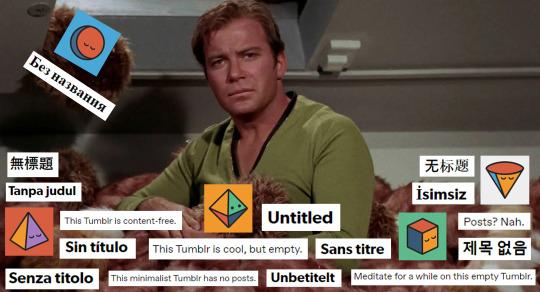
I have had it with these motherfucking spam bots on this motherfucking site.
#personal#tumblr stuff#vent post#spam bots#i've been getting like 1000 spam bot followers a day for the last few days and blocking them all is getting--dare i say--TEDIOUS#wake up. block 300 bots. go to work. come home and block 500 more bots. spend evening checking tumblr to block bots. it's becoming a chore#it's starting to feel like I offended the tumblr gods or something. this is ridiculous. but like hell will i let them win#i won't let my follower count be 50% bots. i feel like a deserve a tumblr badge or something for fending off so many bots.#tribble#the trouble with tribbles#a very apt metaphor i think for these bloody spam bots; block one and five more come to take its place#but upside: the spam bots are helping me compile a Rosetta Stone for the word 'Untitled'. woo#also if you just joined tumblr and want to follow me: for the love of god personalise your bloody blog#i don't care if you have a icon or a summary. if your blog and likes are empty i'm blocking you#because i don't trust empty blogs and i really don't have the time to sort out who's real or not right now#(though if the blog's offering free mp3s 'just click the link!' or is advertising US keto gold coast gummies i know for sure it ain't real)#but hey! good news to people who followed me in the last four days who haven't been blocked; you passed the blog captcha test#anyway just had to get this frustration out of my system; gonna go block some more bots now i guess. i'll be very happy when this stops
75 notes
·
View notes
Text

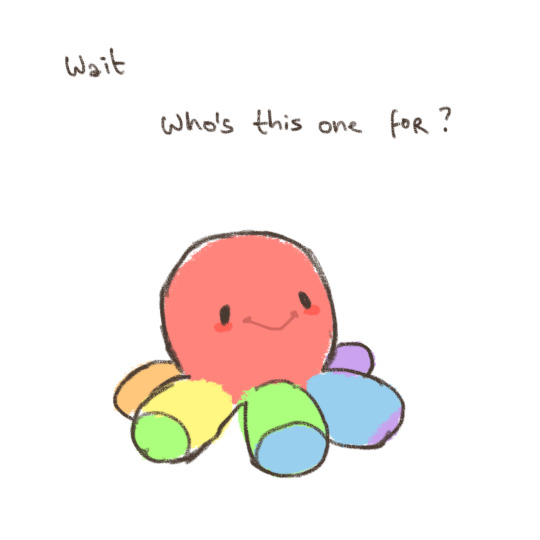

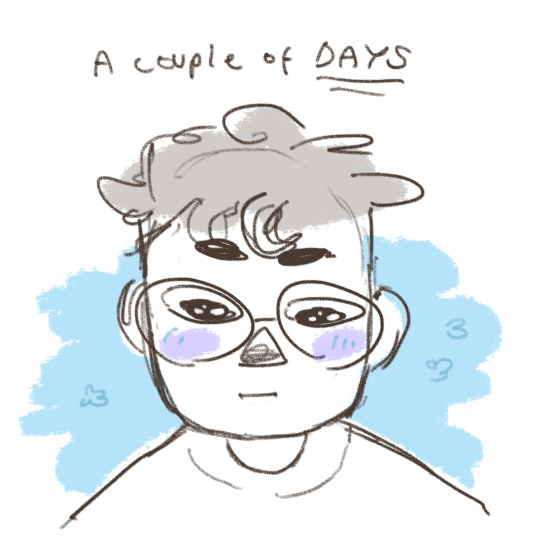

I was sorting out gifts for my a-little-lesser-than-400 cousins and found out about another branch of the family I hadn't been aware of
Happens periodically like once every three months and I'm always FLABBERGASTED
Anyways, happy birthday to the first child of Diego, my grandfather's eighth bastard child
#maybe the thing is: they only count you as a family member from the moment you have a kid??#last time i found out through a picture book about a whole branch of the family who just frigging disappeared#they#stopped contacting us?? anyways they're out there#making more of Us#idk i'm just so-#i want to meet every single one of my baby cousins that's all#but they just keep popping up in different places i can't keep track of baby cousins#and uncles and aunts i guess#latino families really do be like that sometimes#mymble energy#doodle#lil comic#masterpiece#i love this family#willyWONT#<-the me tag
41 notes
·
View notes
Text

fursona redraw for 2024
#fursona#furry art#i'm a donkey despite my last name being Such a dog related term that the anthrocon hotel called me to request i use my real name in booking#image described in alt text#oc art#i guess it counts?
5 notes
·
View notes
Text
I love having a dedicated and aware dream alter like sometimes I just wake up with memories of a new superpower this dude's been at it for nearly two decades and still learns new tricks like last night he unlocked walking on air, which might not seem like much for a guy who can already fly in multiple ways, but the thing is walking on air, it turns out, is just a lot easier when it comes to things like taking off from ledges. But like it's like I'm just waking up Matrix style "I know kung fu" but it's instead of martial arts I'm just learning new superpowers that I don't actually have. Whatever they did that in the Matrix too.
#sfw#personal#ok to reblog#Teeth dream#less happy note is that the same dream reminded me how lonely he is in there. everyone he meets is an NPC.#he met mom in the dream and for a moment she seemed like a full person and he actually for once CHOSE to interact with an NPC#(dreams often have scripts he has to follow and thus he's forced to deal with them when he just wants to play with his powers)#but the moment didn't last and it became clear again that she was not sentient and he was disappointed but not surprised and he left#but just. for a moment. just one short moment I think he felt like he wasn't alone. he's used to it but damn he shouldn't have to be.#two decades. although I guess total dream time would add up to something closer to one year but idc which count is more accurate.#brain makes him to fight off nightmares and for a long time his reality was always waiting for the right moment to turn on him#he learned quickly that it was no use trying to talk to anyone because there's not really anyone there#the nightmares eventually go away but he's still there. doing nothing but dream. only experiencing the waking world through shared memories.#on rare rare occasions he gets little moments like that where he isn't alone...
4 notes
·
View notes
Text
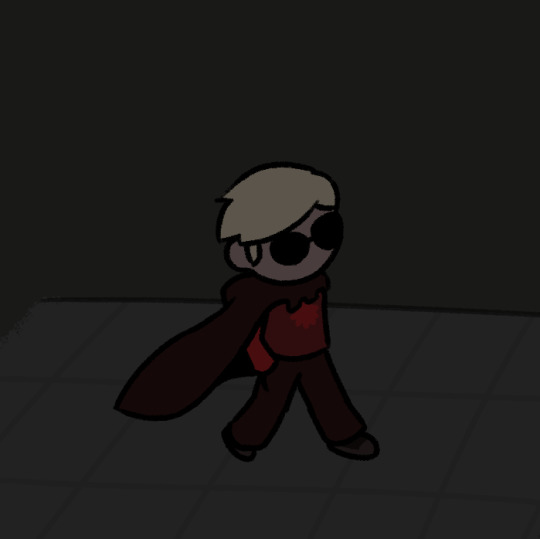
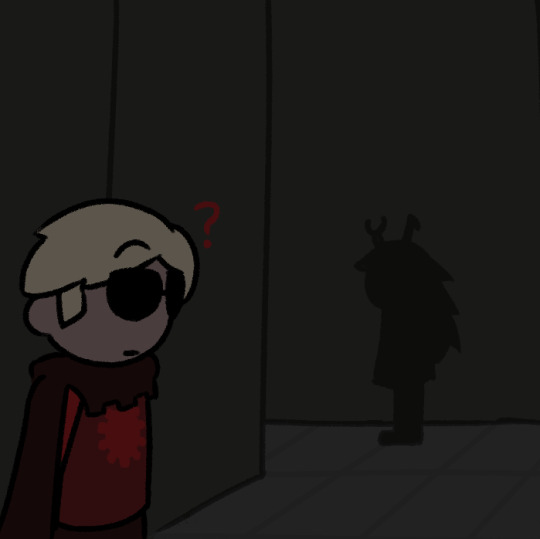

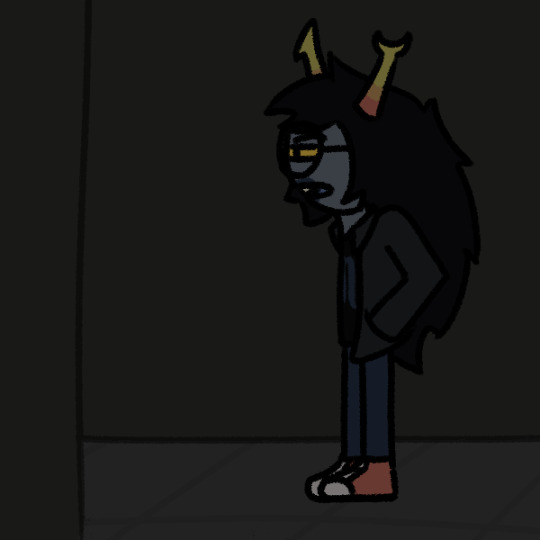


late night on the meteor
#homestuck#dave strider#vriska serket#dyspraxic vriska propaganda#ado's art#i like to imagine they have a little bonding moment after this#vriska's all uncharacteristically shy because she's not used to being seen like this by people she's not familiar with#but dave is literally the last person to give a shit so it's cool#and they open up a little and know each other a little better than just ''those other fuckers''#i guess this counts as#meteorstuck
75 notes
·
View notes
Text
Pro-royals will always be some of the worst people to be around
Like sure tell me all about how 'important' and 'historical' having a monarchy is and how spending millions for a ceremony to put a blood-stained, stolen, worthless crown on a decaying money-leech is worth all of our tax money while I (and millions of other people) sob over the cost of heating and hot water and food over and over again
I'm exhausted
#nid yw ein cartref wedi cael gwres ymlaen ers misoedd oherwydd ni allem fforddio ei gadw ymlaen#felly rydym yn dibynnu ar ddŵr poeth ond mae cymaint o gost#and the cost of food#its so bad#there has been a 50% increase of people who have needed food banks in the last year in my country alone#50% of us that couldn't afford food#if I had to count the times I've second guessed eating food out of worry that I won't have enough to last the rest of the month#I don't have enough fingers to count#I am extremely fortunate to have these necessities even if I'm not always able to afford them#sorry#not sonic#vent#anti royal family#wales#anti monarchy#tw royal family
16 notes
·
View notes
Text
Video Game Lesbians ❤️

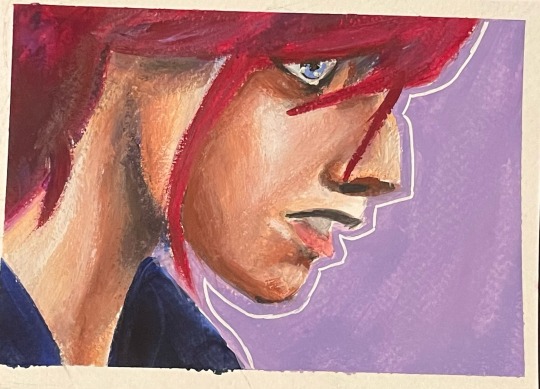
#I guess now I have to paint Chloe too#to complete the trilogy#ik this vi was in the show but it counts#the last of us#tlou#video game#vi#arcane#arcane league of legends#arcane lol#lesbian#lgbt#drawing#my drawing#art#my art#painting#gauche
13 notes
·
View notes
Text


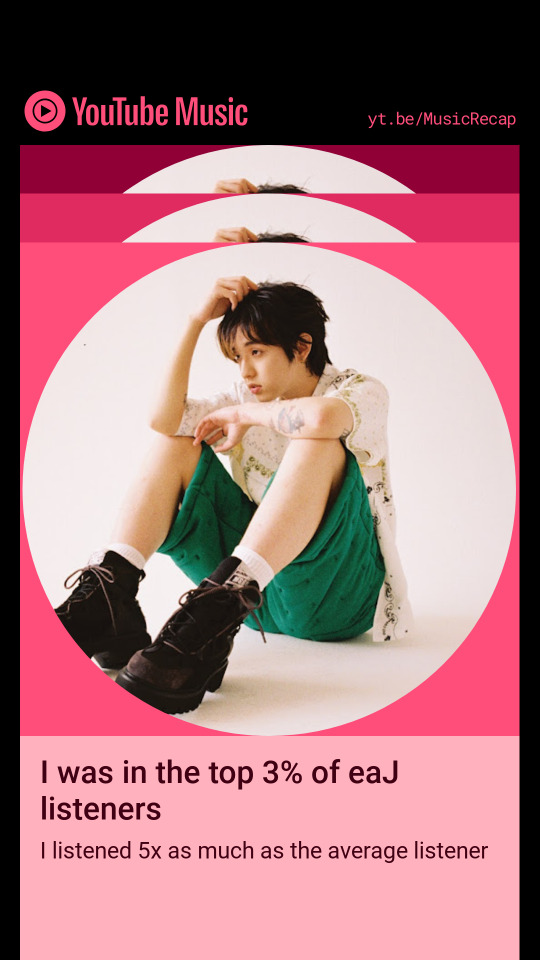

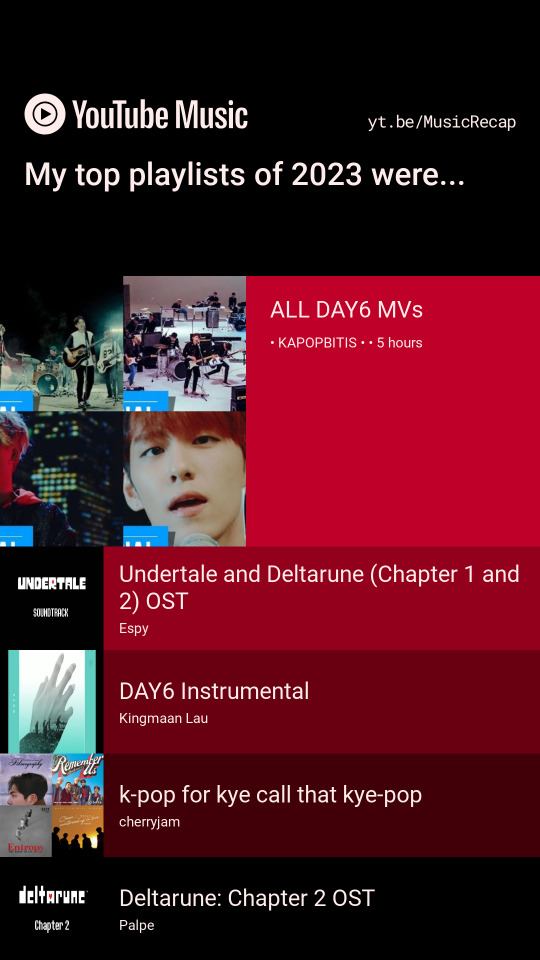




OBSESSED HONESTLY
#i forgot to post this yesterday but IN LOVE TBH#can you tell much like spotify i really only used it around the beginning of the year#and then only a couple of albums and songs here and there after that#but honestly i used youtube music specifically last night and it kinda slayed#like its good for what it is if that makes sense#im so upset that a wrapped wasnt sent out to my school account#(im guessing due to it being a school account and like administration restricting stuff and whatever)#but like literally the only thing i do on it is listen to music#BUT WHATEVER#they recognize that im a tribute to drama love amped up tempos and JUN and that what matters#but yeah if youtube music stays how it is now (or ya know just doesnt change what i like about it) i think ill try and use it more next yea#:3#sstartalkss#addition: something that im noticing is that performances arent counted as that artist but as the channel it was posted on which is honestl#heartbreaking because performances are probably how i tend to listen to music the most (if im not putting it on only as background noise)#but its not that big of a deal#i mean biggest plus about youtube music is that it actually has video game osts and songs that dont get put on other streaming services#so slay ya know
2 notes
·
View notes
Text
Oh bubble tea and pair of half stale donuts. You're the only thing between me and me quitting my fucking job right now.
#does this count as a meal? it's my first meal of the day then :(#HEY YO guess who almost started fucking crying at her desk and is going to be working on the weekend to get something done :(#look. my boss. i like her as a person.#but she is a BAD manager.#what the fuck do you mean you thought I was supposed to be managing the whole website redevelopment for the subsidiary company????#when was i supposed to do that????#i couldn't have even done anything because we have established that all the formatting for the subsidiary company is to match our company#and that's only been really done in the last TWO days by a manager who has done NOTHING but build that for two days#WITH HELP from another person in the team#meanwhile I've been doing all this other urgent shit you've been asking me for#and now you're fucking 'disappointed' that I haven't kept up with the other manager? fuck all the way off#these two websites must be built in the next WEEK#we've had this deadline for MONTHS and we didn't fucking DO any of it until last week????#i have been WAITING for you to read through and approve the written content so i could start loading it in#AND YOU STILL HAVEN'T READ THROUGH IT#so. what? you're gonna read it later and make us re-do copying everything in?#we still don't even have images? you're making me put placeholder images#and then you're going to 'go through and decide what to use on each page'#fat chance of that#you have no idea how clunky this website system is. loading ANY image in takes TIME to process#i am going to SCREAM#i SAID this would happen. I SAID this whole thing would be mismanaged and we'd end up working overtime#im hungry. im tired. i have a headache.#to top it off I've got period cramps????? rage.#less than three months left and I'm rotating out of this team.#ramblings of a bystander
5 notes
·
View notes
Note
hi 3wd. i’ve tried to write before and i’ve never gotten far in the process, despite having many ideas im enthusiastic about. all your blogging about being a planner-writer has got me thinking i might have the same style of writing as you l- and a lot of the reason im struggling to put words on paper is because i don’t have a direction or fleshed out emotional/plot beats to write towards. what would be your advice to any fledgling planner-writers that don’t know where to start? how did you start writing with this writing style?
Hey nonnie 💜
It can be super frustrating to have a bunch of pieces you want to play with but not have them come together in a way that maintains traction. Outlining could definitely be a potential tool to help sustain momentum, so let’s see if I can get some gears turning for you.
For me personally, the outline-approach is one I just sort of fell into naturally. Part of it comes from my school days; we were encouraged to write dot-point plans to structure our arguments/ research/ storytelling for assignments ahead of drafting (some teachers even counted evidence of it towards the final grade), which set it as a habit early. Fun fact: I actually outlined this answer before writing it; I do it for most long posts. Another part of it is that I tend to come at writing from a very analytical angle - there’s a degree to which I try to solve or understand stories as I consume them. One of my earliest casual jobs was working as an English/Lit tutor for high-schoolers. I find a lot of joy in picking narratives apart, figuring out how they work and finding ones that hold up through several layers of examination, so as a writer I like to construct stories that way.
Part of it is also that, when I want to write something for release, I’m conscious of the fact that it will have an audience. A question that hangs around in the back of my mind is “if I found this story and wasn’t the writer, would I enjoy reading it?”
There’s another aspect that has to do with respect, in a way. I love the worlds and the characters that I use in my stories, and for me that means writing things that feel true to their spirit, giving significance to the times when that changes and making sure they have a meaningful journey (even if it’s not a happy one).
For me outlining suits this ethos, since having a map of future directions makes it easier to place foreshadowing fairly, identify themes, build character arcs and keep explanations/ lore consistent.
I’m also going to admit that I just got lucky with Deathly Weapons. There was a very specific emotional idea that I wanted to centre a story around, and the inspiration happened to come with both a starting premise and a concept for the ending. Then I also had wish-lists; some tropes I wanted to play with, and some existing series whose storytelling structure I wanted to emulate and pay homage to. Something I realised a few years after starting DW is that I’m a very project-and-output-oriented person. In a way, Deathly Weapons’ came to me as a project brief where I already knew the end-goal and a lot of what I wanted to work towards.
With that said, let’s talk outlining:
The value of having a plan
To me, an outline is a bit like having an itinerary for a road-trip. It gives you an idea of where you’re going, how long things will take, what key things you want to do, how much it might cost and it helps you anticipate potential problems. But, like an outline, an itinerary isn’t binding. There might be some things that take more effort to change (distance to travel, bookings you need to cancel/ reschedule/ extend - key plot points that a story hinges around or that need more preparation/ payoff to be effective) but you can adjust as you go; take extra time to explore an interesting spot, add a detour based on local recommendations, skip things that turn out to be less compelling than they first seemed, take a shorter route to get to a key destination faster, extend the trip to see a few more sights or decide to cut things short because something came up. The itinerary gives you the security of already knowing where you’re headed, letting you put down the mental burden of having to work out each stop as you go and enjoy the moment more.
Ways an outline can help:
Reassurance: if you have a tendency to be anxious/ self-critical/ have high standards about characterisation, plot holes etc. then an outline can be a good way to workshop the story and get ahead of potential challenges, as well as to concept-test whether this is a project you feel like committing to.
Scoping: blocking out an overview can help you get an idea of the size and complexity of the project, and how much time/resources/teamwork it might need.
Motivation: having a plan of future story moments that you’re looking forward to can provide a goal to help you push through the less exciting parts (e.g. connective scenes) and/or help you re-find your enthusiasm if you’re returning from a break or are feeling creatively flat for reasons outside the story itself.
Iteration: if you tend to come up with stories primarily by exploring and assembling ideas, then an outline method can be a way to quickly put a concept on paper, examine it and then decide if/how you want to use it, without the restriction of needing to write it all out as polished paragraphs first.
Splitting up the steps: useful if you tend to think faster than you can type full sentences, find that you move between ideas non-sequentially or if prose-writing/ sentence construction is something that takes a lot of mental energy or stop-and-starting from you. An outline can be a way to separate the processes of story crafting and story telling into more-distinct stages rather than trying to juggle both at once. Find the story first, then write it.
Non-sequential writing: having a roadmap of your story’s structure and direction can give you more freedom in how you choose to approach it, letting you jump ahead to work on planned future sections/scenes where the inspiration is flowing rather than waiting for the next scene to “come to you”.
For a more direct comparison, Screenwriting Bibles are a form of outline for professional TV/Film production. These “bibles” are key reference documents used by writers for information on the premise, characters, settings and other project elements, as well as to plan future episodes and seasonal arcs. (This podcast transcript, article and template are good starting sources if you want to learn more about TV Bibles.)
Much like a series bible, an outline can help you keep tabs on:
Consistency and continuity: this can be minor stuff like names of background characters or small details (running gags, item descriptions, character trivia) but can also be major stuff like character motivations, who has what abilities, event timelines or story-themes.
Direction: your outline can capture the overall arc(s) and conflict source(s) of your story and their intended resolutions, as well as mapping out how those conflicts are progressing.
Causality: whether planned events and character choices feel consistent and reasonable within the internal logic of your story.
If any of this sounded helpful to you then you might benefit from experimenting with an outliner/ planner approach. There are a bunch of different planner techiques (here’s a link for some) as well as hybrid “plan-tser” methods that you could try. But for now let's talk about the general process, starting with a focus question:
What is it that makes you want to tell this story?
This might seem like a daunting place to begin but it can help with figuring out the core of your story and what you find compelling.
It’s okay if you don’t have a neat-and-clean answer straight away. Sometimes inspiration just strikes out of the blue, and that’s fine. Sometimes you have a vague directional pull but you’ll need to do some story-work before you can identify what’s calling to you. However, if you did have a specific itch or passion that drove you to write then thinking about what and why that is can help you understand what you want from the story – and in turn what might connect with other people.
I also want to be clear that this is not about judging your motivations or their “artistic merit”. I had a specific story to tell is fine, as is I wanted to explore this concept/theme/emotion/issue, or this was a gift/commission for someone else, and so is I wanted to try writing a specific genre, or I wanted to experiment with a specific medium, or I wanted to do my own version of [existing idea] or I am fascinated by this character/relationship/world or I needed some vicarious catharsis, or I was horny. And a whole bunch of other things.
Knowing what you’re trying to get out of a story can help you decide what type of story you want to tell, as well as the overall scope and what medium/format/genre to tell it in. Maybe it’s a single-scene character/aesthetic study, or a one-shot vignette. Maybe it’s one long story, or it could be series of connected stories, or it could be a story-anthology centring on a common idea. Maybe this story would work well as a comic, or art piece(s), or podcast, video, or something interactive like a choose-your-own-adventure or a videogame.
Understanding where you’re coming from can also help you answer the questions of what is your story about? and what happens in your story? which are related but not the same.
What is your story about concerns the themes and thesis of your story, which can help you figure out the story’s tone, main emotional or thematic conflict(s), and how you want them to resolve by the ending. Put simply, it’s the message.
What happens in your story is the synopsis of planned events, character actions, worldbuilding and other content. Put simply, it’s the stuff your story has in it.
Let’s take my Deathly Weapons fanfic as a case study:
What made me want to write this story?
Deathly Weapons started with me being unsatisfied with what felt like a gap in the Danny Phantom x Superheroes crossover fanfic space at the time. There was a trend where stories would kill Danny’s friends and family to justify placing him with the crossover’s other hero team but very few of those stories felt like they acknowledged the emotional consequences of doing so; the ones that allowed him to grieve frequently using it for nonspecific angst about Loss™ or mourning the generic archetypes of A Love Interest™, A Sister™, Parents™ or A Best Friend™ rather than the specific characters and bonds from the series. There were also some smaller itches around plot construction and mysteries that I couldn’t find many stories to scratch. I wanted to try writing something to fill those gaps.
What is this story about?
Thematically Deathly Weapon’s central emotional arc is about grief and healing: in particular the uniqueness of the bonds between people and how grief reflects the specific hole each individual leaves behind, as well as the process of finding closure, making new connections and moving forward in the aftermath of loss.
What happens in this story?
A lot. In my youthful hubris and overambition I planned out basically a half-season of a TV show. For the sake of not dragging this section out by a mile, here’s an arc/mission plot teaser list I made a little while ago.
Since Deathly Weapons Arc II is deliberately structured to emulate a TV show, you can sort of see how that summary has accidentally ended up mirroring parts of a top-down Pitch Deck. But, of course, that’s not the outline I actually use when writing.
Different levels and types of outline
Like a lot of creative terms, “outlining” covers a pretty broad umbrella’s worth of stuff.
Methods-wise there are plenty of different approaches: from specific story-writing software (Scrivener, Campfire etc.), to word documents, to binders and notebooks, to honest-to-goodness sticky-notes, thumbtacks and string. Personally I alternate between a documents folder on my computer and a physical notepad/sketchpad for when I’m on the go, but you should pick whatever format feels most comfortable for how you process/visualise information.
Functionally, I think it helps to conceptualise three main levels of outline: Brainstorming, Structural and Detail. To be clear, you don’t have to do all three. A short story or one-shot might be served by writing directly from a brainstorming or light structural outline. You also don’t have to keep them strictly separate. A brainstorming document might cover some early structure notes or test paragraphs. A structural or detailed outline might have some brainstorming or research sections as you uncover and solve smaller questions. Heck, you can have detail notes inside your initial drafts if they help you keep the story flowing. These are tools you can use, not prescriptions you need to follow.
Let’s talk about the levels:
Brainstorming
Brainstorming is the least structured. Like the name suggests it’s mostly about getting concepts down and coming up with ideas – this could include early notes for plots beats/ scenes/ character interactions, sketches, screenshots/quotes and possibly research questions for stuff you want to confirm or find out about (e.g. checking source material, or researching systems and potential setting-locations). You could consider this like early research notes for a class essay – where you know what your subject is and might start with some initial thoughts or focus questions but are still learning and figuring out the broad strokes of your content and stance.
Despite that comparison, brainstorming is probably the most creatively fun step in the process. This is not where you worry about things like “quality”, “cohesiveness”, “accuracy/canon compliance” or “cliches” – this is the time for rolling with whatever inspiration strikes you, pouring out any idea you find interested/compelling/cathartic, asking questions, going down internet rabbit holes and generally just enjoying unabashed creation. This is your raw material: you’re going to cut and shape it later.
Structural
Structural outlines probably have them most utility in giving your story shape and form, especially if your story is long or has a lot of components. If you were doing an essay, this is the part where you’d figure out your thesis and start grouping each main argument and its supporting points into planned body paragraphs. For a story, this is where you start sorting your ideas and putting them in order; deciding on your arcs, conflicts and resolutions, working out the order and causality of events, your character motivations and dynamics, where to place key foreshadowing, major scenes and the like. This is the level where you’re going to try and solve potential story problems – to come up with in-universe explanations and identify possible plot-holes before you write yourself into them. You’ll likely do extra brainstorming or research in this phase too but it’ll be more targeted – aimed at filling gaps, connecting dots or serving specific needs.
For longer or more complex stories you might have multiple structural outlines tracking different levels of granularity; some providing an overview of the whole story/ series arc, while other focus on specific characters/ subplots or break things down into individual plot beats and scenes. You might also spin some of your initial brainstorming into reference or meta documents – content that you aren’t going to directly cover in-story but that will inform or add depth/consistency to other elements. If you enjoy puzzle-solving then this can be a very satisfying part of the process: there’s nothing quite like hiding a subtle piece of symbolism/foreshadowing, coming up with a sneaky red-herring or finding a rock-solid explanation to make you feel extremely clever.
It’s also worth repeating that you are not beholden to whatever structural outlines you first come up with – your outlines can and should evolve with you as you develop your story and come up with new or alternate ideas. (Just last year I re-ordered two major subplots and added an extra character arc for Deathly Weapons).
Some stuff to think about for structural outlining:
Remember that, as the storyteller you have full control of the narrative and what happens inside it. Like I said at the start of my case study on YJ: Invasion’s writing, even the rules of a fiction piece are made up: there is nothing physically stopping you from making the sky be a different colour every five minutes if you felt like it. If you want something to happen then you can work backwards to reverse-engineer a specific scenario where those things would reasonably occur. Start at Scene B and figure out what needs to happen to get there from Established Starting Point A. If you need a character to act a certain way, then you can tailor a situation to trigger that response based on their established personality/ insecurities/ flaws. You can manufacture specific story problems whose solutions play toward or against the skills and abilities of different characters, or create scenarios which situationally discourage characters from using skills/abilities/tools that might otherwise be overpowered.
You can also make the call to deviate from what has been established in order to facilitate a scene or plot point - temporarily imposing a trait for narrative purposes (sometimes referred to as carrying a ball) or Rules Lawyering your worldbuilding to create a technical loophole. This risk here is that this can feel artificial, jarring or unfair if not reasonably justified within the story logic. There’s also a limit on how often/ how far you can push this before it risks breaking the story. If things start to contradict or situations arbitrarily turn on a dime then your audience can lose trust that the characters and world will follow the expectations set by the narrative – they can start to feel narratively unsafe, until it reaches a point where the only way for them to reconcile the dissonance and inconsistencies in the story is to acknowledge that it’s all an artificial construct being externally steered by the hand of the author. You can do whatever you want… provided you do the work to make audience to believe it.
That being said, try not go get too wedded to the specifics of your early ideas. Sometimes an element is just not going to fit with the direction your story ends up taking; whether because it’s not compatible with the eventual trajectory of the characters/events/lore or simply because it would be hard to include without disrupting/diverting/distracting from the flow of the story at that point. In some instances you can take the core of an idea and modify it to find a new place in the narrative; for example by repurposing a scene or piece of dialogue, repackaging information, rescheduling a conversation, fusing concepts together or deconstructing them and integrating the component parts across other scenes. But in other cases you may decide that the potential problems (whether structural or narrative) introduced by including an element outweigh the value it could add – in which case it’s time to lovingly set it aside. This is what they mean when they say kill your darlings. Having a designated document for future story ideas and/or outtakes can help with this (or you could do what I did with Defining Moment and turn an idea into its own side-story).
This can be also a good place to consider more technical story elements, like pacing. Think about the peaks and valleys of intensity (suspense, intrigue, action, character drama etc.) across the beats of your story; where you might want to ramp things up or down, and how you might use scene and/or chapter breaks to space out information, create breathing room or hold the audience at a certain level of emotion/anticipation. (For a good short primer, try these videos about Pacing and Tension Cycles in games).
You may also like to use the structure overview as an opportunity to take stock of Tropes and Patterns. Not to avoid them – you can’t really avoid tropes – but just to see if any are showing up and what they might be saying, even if you didn’t intend for that to happen. (For a topical example: consider what tropes are showing up around different minority/minority-analogous characters - either in their depictions or how the story treats them - and what message that might be sending. There’s a lot of bias to the way certain groups and issues have historically been portrayed in media, some of which have baked themselves into now-common stock plots and archetypes. That isn’t to say you should never use them; just be conscious and careful, especially if your story intends to make some sort of commentary on those topics.) On a more positive note, this can be another way to learn about what story mechanics you like, both in your own writing and others’.
Detail
Detail notes are the most granular level of outlining, getting down into the specifics of an individual scene or conversation. These are the least strictly necessary – depending on the length/ complexity of your story, the granularity of your structural outline(s) and your personal writing preference, you may prefer to jump directly from a structural outline into a first draft. That said they can still be useful, especially if you want to hammer out the fine details of action, dialogue or information-flow while staying a step back from specific prose. This is where you get things like a bullet-point breakdown of each line/action/piece of narration (for when you have a detailed idea of what’s going to be said/done but not the specific words to describe it) or script-style notes (for when you have the character voices and lines but not the narration or action surrounding it). As mentioned earlier, you can blend detail notes and rough drafting together – writing some sections out in prose as the words come to you, then breaking into note-form to keep the ideas flowing in sections where wording might be starting to stick.
An example
Let’s look at my outlining system for Deathly Weapons:

Now, I want to make it clear: this is not the standard. This is not even the standard for me. Deathly Weapons got a bit out of hand, ballooning into a half-season of a TV show: it’s more a series of 12+ self-contained stories in a trench coat than your standard fanfiction. However, it is a decent example of complex outlining. I have multiple levels of structural outline – some covering the entire story arc, some covering the individual missions. I also have quick-notes that I made as a consistency-reference from canon, and some worldbuilding meta I did as a thought exercise to develop one of the character-backstories (the one shown ended up published here on Tumblr). You can see how I blend the outline types together in my detailed notes, as well as how my approach to outlines has evolved from more brainstorming-focused to more structurally-focussed as the story has solidified. Again, this is not the standard, but hopefully it gives you an idea of what you can get up to with outlines for a complex long-term project.
Okay, so that’s the basic breakdown of outlining as a process (at least the version I use). Hopefully it’s got some gears turning.
However, I also know that it’s more of a framework through which to approach story-building; it’s an organisational tool that helps you set out current and future-planned content in a way that lets you take stock, identify things that need attention and keep track of important details. On its own it’s not necessarily going to be able to help address the challenges it reveals; in the same way that knowing how to plan an essay won’t necessarily teach you how to research one effectively.
In Part 2 of this series (yep it's a series now) I'm going to go over some concepts for story-building and editing that might help you during the structural phase. Click here to go to the next part >>
#Writing advice#Outlining#Planner writing#Story planning#Stories#Post Series: Outlining Tips#this was originally meant to be one post but then Tumblr decided it was too long so here we go#Sorry this took ages for me to answer nonnie#I moved cities again and the burnout after last year whacked me very hard. Brain go (half-hearted raspberry noise)#Hopefully there’s enough stuff in here to make up for the wait#It might amuse you to know that I did 3 different outlines trying to figure out what would be useful#Learn from my example but maybe don’t try to follow it#Outlines Divided (who lives in a state of derangement and writes over 10000 words of background notes per paragraph)#is an outlier and should not have been counted#There’s a lot of talk about DW in here. How very self-indulgent telling you all about me. me. me.#(It’s mostly because I’m the creator in its case so I can talk about the processes used to make it without making guesses)#Anonymous#3WD#3WD Answers
9 notes
·
View notes
Text
Yesterday I did an escape room but I have no tangible proof for it. The reservation was made online so I don't have a receipt or a stub, or a sticker or a doohickey for completing the thing, or like, any memorable convo with the owner afterwards about our score or anything. It could have all been a dream.
#last time i went to this place they were just starting out and building it#so i got to chat with the owner afterwards as he was calculating the scores#and it was fascinating to see how he was thinking about it and building all the props.#also asked for my business card bc i told him i worked in theatre#but this time around the owner was there but we didnt get the score. bc bunch of high school kids were working FOH and setuo#and like lmao. we wasted so much time trying to find one piece of the puzzle but turns out. it was not in the room. the guy forgot to reset#we finished in time but like. i feel like it shouldn't have counted against us that we couldnt find the thing that was not in the room.#and some other parts were broken too so we did the puzzle and nothing happened... and the kid walked into the room and just. gave us a key#i guess the owner is now kinda tired of it. bc its been around for a while and he prob got disillusioned or something :/#with ppl breaking things and stuff lmao#anyways. it was cool though. i wish i could make an escape room. anyone wanna hire me for that plsssssss#log
6 notes
·
View notes